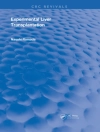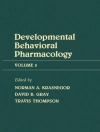This book provides a thorough overview of the detection of PCNs using modern imaging techniques and a clear guide to the recognition of the different subtypes of PCN based on their radiologic and histopathologic features. This volume will serve as an excellent aid to the selection of optimal therapeutic strategies based on preoperative diagnosis. A further important feature is the emphasis placed on radiologic, clinical, and surgical correlations.
Pancreatic cystic neoplasms (PCNs) have been increasingly recognized during the past decade, mainly because of the widespread use of modern imaging modalities for the investigation of often unrelated abdominal symptoms. The three most common subtypes of PCN are serous cystic neoplasms, mucinous cystic neoplasms, and intraductal papillary mucinous neoplasms. These subtypes have distinct radiologic and histopathological features, and their biological behavior differs greatly. Accurate preoperative diagnosis is of prime importance in selecting the optimal therapeutic strategy: while serous cystic neoplasms are almost always benign, and may be treated conservatively, mucinous cystic neoplasms and intraductal papillary mucinous neoplasms have malignant potential, warranting an aggressive surgical approach, i.e., pancreatectomy. Pancreatic Cystic Neoplasms will be of great interest to surgeons, gastroenterologists, radiologists, oncologists, and pathologists, and also to internists and residents in these specialties.
Inhoudsopgave
Introduction.- Classification.- Serous cystic neoplasms.- Mucinous cystic neoplasms.- Intraductal Papillary Mucinous Neoplasms.- Rare cystic neoplasms.- Diagnostic evaluation.- Imaging.- Cross sectional Imaging.- US, CT, MRI.- Endoscopic ultrasonography.- ERCP / MRCP.- Intraductal ultrasonography / ductoscopy.- FNA and analysis of the cystic fluid.- Cytology.- Biochemical analysis.- Treatment.- Indications for surgery.- Surgical treatment.- Adjuvant therapy.- Follow-up.- Prognosis.












